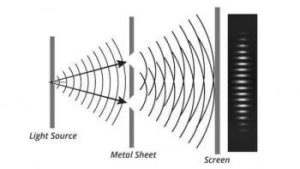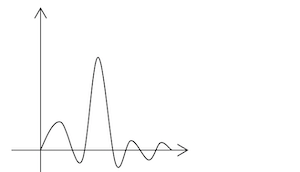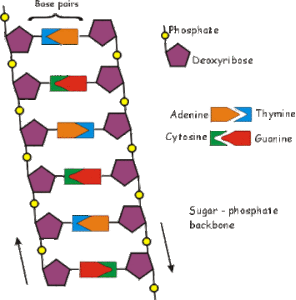“Ah, but a man’s reach should exceed his grasp,
Or what’s a heaven for?”
— Robert Browning, Andrea del Sarto
There is no question that the activities of science and religion have very different aims; their boundaries are wide and goalposts divergent. For starters, science is taken to lead humanity towards a technological utopia free from human suffering and strife; a peace that can only come from scientific progress.1 Science, we are told, will—at the end—deliver us from natural evil, moral evil, bigotry, and intellectual mediocrity. Religion, on the other hand, has celestial goals. Its aim is to lead people to a different type of salvation, one that transcends human achievements and worldly concerns. In other words, the ultimate concern of religion is not achieved through inventions crafted by human hands, but an eternal place determined for us long before we had salvation in mind. Religion, they say, offers no knowledge about the physical world because knowledge about the world is the domain of science, not faith.
This is the narrative we have been incessantly fed, so it should be no surprise why so many people fail to notice where science and religion actually intersect. Let me be clear: I am not suggesting that science and religion ought to blend in their activities, but despite their different aims, there is a closer relationship between science and religion than what we have been made to believe. The narrative of divergent goals and impervious boundaries is nothing but a clever subterfuge intended to draw a line between the magisterium (i.e. the domain of teaching authority) of science and the magisterium of religion (Gould, 1999, p. 49). For Christians, however, the knowledge of God and His creation go hand in hand. There is not division, but unity in our pursuit for ultimate truth. Indeed, as the Psalmist proclaimed, “Great are the works of the Lord, studied by all who delight in them” (Psalm 111:2, see also 8:3, 115:16).We believe that nature, and all its inner workings, is the creation of God and that science can help to capture a snapshot of God’s essence, or, as Paul put it in Romans 1:19-20, “[W]hat may be known about God is plain to them, because God has made it plain to them.For since the creation of the world God’s invisible qualities—his eternal power and divine nature—have been clearly seen, being understood from what has been made, so that people are without excuse.”
Sadly, many scientists see their pursuit as something entirely different. They think that the goal of science is to understand the world independent of God, and to understand nature devoid of what they consider superstitious nonsense. Atheist biologist Jerry Coyne insists that religion and science have different methods for acquiring knowledge about reality and holds that the methods of religion are basically “useless” in that endeavor (Coyne, 2015, p. 64).The late theoretical physicist, Stephen Hawking, went as far as to say that “science makes God unnecessary” and that “[t]he laws of physics can explain the universe without the need for a creator.”2 Of course, what scientists do in their respective disciplines and what they think about the nature of reality are two very different things. Science is not invested in making claims beyond what their methods of inquiry reveal, so if it is committed to methodological naturalism (an a priori delimiting approach to scientific investigation), then science excludes any knowledge of God that may be gleaned from nature at the outset. A scientist ought to recognize their prior philosophical commitments and let the evidence speak for itself.
The importance of recognizing prior philosophical commitments is true for Christian scientists as well, especially in structuring knowledge about the world by appealing to primary vs. secondary causation.Of course, our sacred text makes claims about reality, but no religion (save materialism, perhaps) confuses a science book for Holy Writ. My point here is that people are motivated by different worldviews and there is no rule concerning religious claims that says, “faith must be devoid of evidence.” The Greek term for faith in the New Testament is actually “pistis” (πίστις), which translates well as “trust.” Just as mounting scientific evidence justifies belief in a theory; our faith is based on the incontrovertible evidence that justifies our trust in a Creator-God.
It should be no surprise then that although science seems to hold a monopoly on the truth about reality, science makes many claims that are not provable. For instance, beliefs about the reliability of our senses, the reliability of memory, the reliability of past events to predict futures ones and even our dependence on logic and mathematics cannot be subjected to the scientific method (Marcus, 2015). By contrast, persons of faith do not need to reject processes in toto. As believers we see God working through secondary causation, which could include discontinuities in the causal structure of the world (i.e. anomalous non-mechanistic processes) that make a compelling case for Divine foresight.3 Methodological naturalism can only work within the established framework and confines of presupposed natural mechanisms. That’s it. The advantage of letting nature’s design yield information about what constitutes causal adequacy without metaphysical constraints is that it helps us to think out of our preconceptions and makes science a more liberating endeavor for discovery.
The materialist reads the above and has an immediate objection to my proposition. A scientist committed solely to material explanations believes that proposing divine intervention to answer questions of unknown natural phenomena commits a god-of-the-gaps fallacy. I can appreciate why a scientist (who is also a materialist) needs to cast doubt on how a person can draw scientific predictions from seemingly arbitrary causation. Fair enough, except that the god-of-the-gaps objection isn’t valid unless one already assumes that nature operates in a nexus of inviolable laws. Science itself, however, shows us that nature is not always predictable and often characterized by anomalous disjointed repentine processes and, consequently, the need to explain everything in mechanistic terms is merely ad hoc. Predictions, therefore, are not always a prerequisite for good science, they are useful in articulating patterns, but they are not indispensable.4

Predictions typically take the form of “if, then” statements and, thus, indicate that a particular experiment must produce certain results if a hypothesis is to be taken as true. Here is a classic example: If you drop a bowling ball and a feather simultaneously from the same height in a vacuum, then it is expected both will hit the ground at the same time. This is a very predictable pattern, however, a modern example—the so-called double-slit experiment—illustrates that scientific predictions are not always reliable. In the double-slit experiment (see Fig. 1) scientists first assumed that if we shoot a beam of light through the first two slits, then the barrage of particles (photons) would produce a pair of corresponding bands on the screen. However, that prediction proved false. What we do get from this experiment is an interference pattern of bright and dark bands, which suggest that a light beam behaves as a wave, instead of the barrage of particles. But it gets worse; the same interference pattern appears even as we fire one photon at a time! There are several interpretations of this phenomenon of wave-particle duality, but they are all attempting to address the probabilistic nature of the quantum realm, and how the photon’s trajectory is equally probable at any location/momentum and at any given time, making predictions about the location of individual photons impossible.

Of course, Christian theists do not merely invoke God where our knowledge is incomplete, but rather, we invoke God on what we do know about the world. To be sure, there is a sense in which agent causation does have some measure of predictability and heuristic value. As any good engineer can tell you, all design has constraints which require compromises between variables that often times result in the sacrifice of optimality. We can see then why biological forms have certain symmetries, or why certain unrelated structures are repeated throughout nature,5 so much so that novel body plans are virtually unheard of. Understanding design constraints can also help us to make predictions about possible evolutionary pathways (see Fig. 2) or, as implied above, possible structural outcomes given certain fixed parameters in the laws of biological form(Denton, 2016, p. 14). Nevertheless, assuming mechanistic processes at every level of the physical world in a reductionist fashion halts science. It forces us into accepting theories merely to accommodate the preconceived mechanical world in the physicalist’s ontology.
But there are other reasons, outside of predictability, that mechanisms are deemed important in science. Mechanisms are manifested in the relations held between spatio-temporally located entities such that they explain what disembodied entities allegedly cannot. That is to say, causes are identified through the relations held between entities that we could observe and catalogue. In contrast, materialists think that disembodied divine entities are completely inaccessible to investigation. They are, as it were, missing in action. They fail to meet, argues the materialist, the causal criterion that “real” entities must satisfy in order to be useful to science (Colyvan, 1998, p. 4ff).
“The Eleatic Principle or causal criterion is a causal test that entities must pass in order to gain admission to some philosophers’ ontology. This principle justifies belief in only those entities to which causal power can be attributed, that is, to those entities which can bring about changes in the world.” — Mark Colyvan, Can the Eleatic Principle Be Justified? p. 1.
In my estimation, pointing out one aspect of physical reality, namely regularity, does not give scientists license to set the rules of investigation. If nature exhibits discontinuities, scientists cannot simply reject entities or processes that appear out of order. They must recognize that causation is, often times, not derived from direct observation but from the effects that casual relations leave behind. Moreover, current scientific approaches invoke unobservable entities all the time and some philosophers of science have even moved away from entities all together by proposing that the unobservable structure of the world is better understood in the form of “relations without relata” (Ladyman, 2007, p. 151ff).

and 2 base pairs. The sugar and phosphate are joined in a chain to form the sugar-phosphate backbone. The base pairs are adenine (A) and thymine (T) or cytosine (C) and guanine (G).
So, how are disembodied entities with casual powers—like God—accessible to science? Well, as far as we can tell, there are no surprising events currently occurring around us, so we assume that all the interesting events have already come to pass; hence we reason by retroduction. We reason from past events to make an inference to the best explanation of present observations. One of my favorite examples of intelligent design is the double-helix structure of DNA (Meyer, 2009, p. 242ff). Not only does it defy every known mechanism that would explain the information embedded in the molecule along its longitudinal axis (see Fig. 3); the nucleotide base pairs that are sequenced to specify functional roles within the cell are quite literally arbitrary because the sequence does not depend on any affinity between the bases. This is astounding because the only cause known to produce this type of complex specified information is intelligent agency.
Another implication of the informational content of DNA is that it codes for building all of the machinery necessary for cell function. Ribosomes bond amino acids together in the order and shape specified by messenger RNA, and these ribosomes are made of rRNA and proteins which themselves require assembly instructions. This raises an interesting set of questions: Which came first? How did DNA come about and acquire informational properties? Did DNA encode for building ribosomes, or did ribosomes come first in the self-replicating proto RNA world? If ribosomes came first, what role did they play before acquiring the ability to translate mRNA into complex protein machines? How can ribosomes even begin to assemble amino acids into protein parts for machinery that have functional roles in the cell?6
Clearly, there isn’t anything particularly supernatural in what I am asking here. In fact, I contend that if God is actively involved with His creation, and I believe He is, then there really is no natural vs. supernatural dichotomy. Science continues to work as it does whether or not we believe He is involved, except that the materialist must resort to handing out promissory notes because his commitments cannot allow for a “Divine Foot in the door”of the scientific establishment, even when there is clear evidence of design (Lewontin, 1997, p. 31).7
So, as it turns out, religion and science are not at odds. Scientists with differing worldviews have the same empirical and epistemic access to the world. They may arrive at different conclusions about what qualifies as a cause, or as an explanation, but if the materialist’s own ontological commitments holds him captive, then he is no longer doing science. Personally, I am persuaded that the order in the universe is a good reason to trust in a Creator-God. In a world that would otherwise select us out of existence, the Apostle Paul reminds us in Acts 17:28 (quoting the Cretan philosopher, Epimenides) “For in him we live and move and have our being.”
1See Bertrand Russell's A Fresh Look at Empiricism: 1927-42 (Routledge: London, 1996). 2Watch the complete ABC News interview here: https://abcnews.go.com/GMA/stephen-hawking-science-makes-god-unnecessary/story?id=11571150 3The origin of the universe breaks from quantum mechanics to classical physics; the origin of life breaks from organic chemistry; and novel organismal forms break from gradualism. 4One can predict the location/momentum of a photon given the probability density in measuring its distribution pattern (i.e. according to physicist, Max Born). 5There numerous examples of convergent evolution from proteins, enzymes, biological pathways, and organisms that defy statistical expectations. 6See, for example, the assembly parts of a bacterial flagellar motor. 7From evolutionary biologist, Richard Lewontin: “Our willingness to accept scientific claims that are against common sense is the key to an understanding of the real struggle between science and the supernatural. We take the side of science in spite of the patent absurdity of some of its constructs, in spite of its failure to fulfill many of its extravagant promises of health and life, in spite of the tolerance of the scientific community for unsubstantiated just-so stories, because we have a prior commitment, a commitment to materialism. It is not that the methods and institutions of science somehow compel us to accept a material explanation of the phenomenal world, but, on the contrary, that we are forced by our a priori adherence to material causes to create an apparatus of investigation and a set of concepts that produce material explanations, no matter how counter-intuitive, no matter how mystifying to the uninitiated. Moreover, that materialism is absolute, for we cannot allow a Divine Foot in the door. The eminent Kant scholar Lewis Beck used to say that anyone who could believe in God could believe in anything. To appeal to an omnipotent deity is to allow that at any moment the regularities of nature may be ruptured, that miracles may happen.” Colyvan, Mark (1998). Can the Eleatic Principle Be Justified?, Canadian Journal of Philosophy, Vol. 28, No. 3. Australia: University of Tasmania, p. 4ff. Coyne, Jerry (2015). Faith vs. Fact: Why Science and Religion are Incompatible, New York: Penguin Books, p. 64. Denton, Michael (2016). Evolution: Still a Theory in Crisis, Seattle: Discovery Institute Press, p. 14. Gould, Stephen J. (1999). Rocks of Ages: Science and Religion in the Fullness of Life, New York: Ballantine Books, p. 49. Hawking, Stephen (2010). Science Makes God Unnecessary, ABC News interview. (https://abcnews.go.com/GMA/stephen-hawking-science-makes-god-unnecessary/story?id=11571150). Ladyman, James & Ross, Don (2007). Everything Must Go: Metaphysics Naturalized, New York: Oxford University Press, p. 151ff. Lewontin, Richard C. (1997) Billions and Billions of Demons (review of The Demon-Haunted World: Science as a Candle in the Dark by Carl Sagan, 1997), The New York Review, p. 31. Marcus, Russell (2015). The Eleatic and the Indispensabilist, Theoria: An International Journal for Theory, History and Foundations of ScienceVol. 30, No. 3 (September 2015), pp. 415-429. Meyer, Stephen C. (2009). Signature in the Cell: DNA and the Evidence for Intelligent Design, New York: Harper One, p. 242ff. Wigner, Eugene P. (1960). The Unreasonable Effectiveness of Mathematics in the Natural Sciences, Communications in Pure and Applied Mathematics, vol. 13, No. I. New York: John Wiley & Sons, Inc. FOOTNOTES
REFERENCES







Sorry, comments are closed for this post.